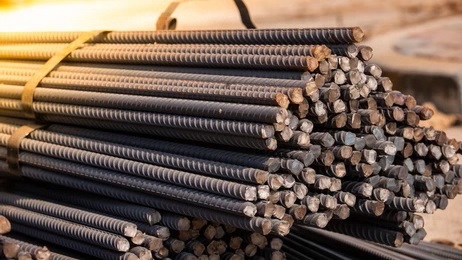Within the intricate framework of construction, an unsung hero plays a pivotal role in fortifying structures against the tests of time and nature – reinforcing steel, commonly known as rebar. This article undertakes an in-depth exploration of the characteristics, various types, applications, and the profound significance of rebar in the dynamic world of construction.

Characteristics of Rebar
Rebar, primarily composed of steel, exhibits key characteristics that contribute to its widespread use in construction:
- Strength and Durability: At its core, rebar serves as a reinforcement material, enhancing the tensile strength of concrete and fortifying structures against various forces that might compromise their integrity.
- Corrosion Resistance: Recognizing the potential vulnerability of steel to corrosion, rebar often incorporates corrosion-resistant materials or is coated with protective layers, ensuring longevity even in challenging environmental conditions.
- Flexibility in Design: Available in various sizes and shapes, rebar provides architects and engineers with a flexible tool to meet diverse structural requirements, enabling innovative and efficient designs.
- Adherence to Building Codes: Manufactured to meet rigorous industry standards and building codes, rebar ensures compliance with safety regulations, assuring the structural integrity of construction projects.
Types of Rebar
Diverse types of rebar cater to specific construction needs:
- Mild Steel Rebar (MSR): Commonly known as black rebar, MSR is versatile and economically viable, making it a staple in various construction projects for general reinforcement purposes.
- High-Strength Deformed Rebar (HSDR): With surface deformations for improved bonding with concrete, HSDR is deployed in high-stress areas of structures, providing enhanced strength where it’s needed most.
- Epoxy-Coated Rebar: To counter corrosion risks, epoxy-coated rebar provides an additional layer of protection, making it ideal for structures exposed to harsh environmental conditions.
- Stainless Steel Rebar: Recognized for its corrosion resistance and strength, stainless steel rebar finds application in environments where conventional rebar might succumb to corrosion, such as marine structures.
Applications of Rebar
Rebar finds diverse applications across a spectrum of construction projects:
- Foundations and Footings: The fundamental application of rebar lies in foundations and footings, where it provides essential reinforcement to support the weight of structures.
- Slabs and Columns: In the construction of slabs and columns, strategically placed rebar ensures structural integrity, preventing cracks and enhancing load-bearing capacity.
- Bridge Construction: Rebar plays a critical role in the construction of bridges, where it fortifies against the dynamic forces exerted by traffic, weather, and other external factors.
- Retaining Walls: Reinforcing retaining walls with rebar enhances stability, preventing failure due to soil pressure and ensuring their longevity.
- High-Rise Buildings: Tall structures, such as skyscrapers, heavily rely on rebar to withstand varying loads, ensuring stability and safety for occupants.
Significance of Rebar in Construction
- Structural Integrity: Rebar is the backbone of many structures, safeguarding against tension forces and preventing concrete from cracking or failing under stress.
- Longevity: By fortifying concrete, rebar significantly contributes to the longevity of structures, reducing maintenance costs and increasing the overall lifespan of buildings.
- Safety Assurance: The incorporation of rebar enhances the safety of structures, providing resilience against catastrophic failures and ensuring structures can withstand natural disasters, heavy loads, and other external pressures.
- Economic Benefits: While constituting an initial investment, the use of rebar pays dividends over time by minimizing the need for repairs and maintenance, establishing itself as a cost-effective solution for construction projects.
The Future of Rebar: Innovation and Sustainability
As technology evolves, so does the world of rebar. Innovations like fiber-reinforced polymer (FRP) bars offer lighter and corrosion-resistant alternatives to traditional steel. Sustainable practices are also on the rise, with recycled steel rebar gaining traction. The future promises even more exciting developments, pushing the boundaries of strength, sustainability, and even aesthetics in this often-overlooked building material.
Conclusion
In the intricate symphony of construction, rebar emerges as a silent guardian, steadfastly reinforcing the foundations of our built environment. Its robust characteristics, diverse types, and versatile applications make rebar an indispensable component, ensuring that structures stand resilient against the forces of time and the environment. As construction continually evolves, rebar remains an enduring symbol of strength, stability, and the unwavering commitment to building a future that endures.



